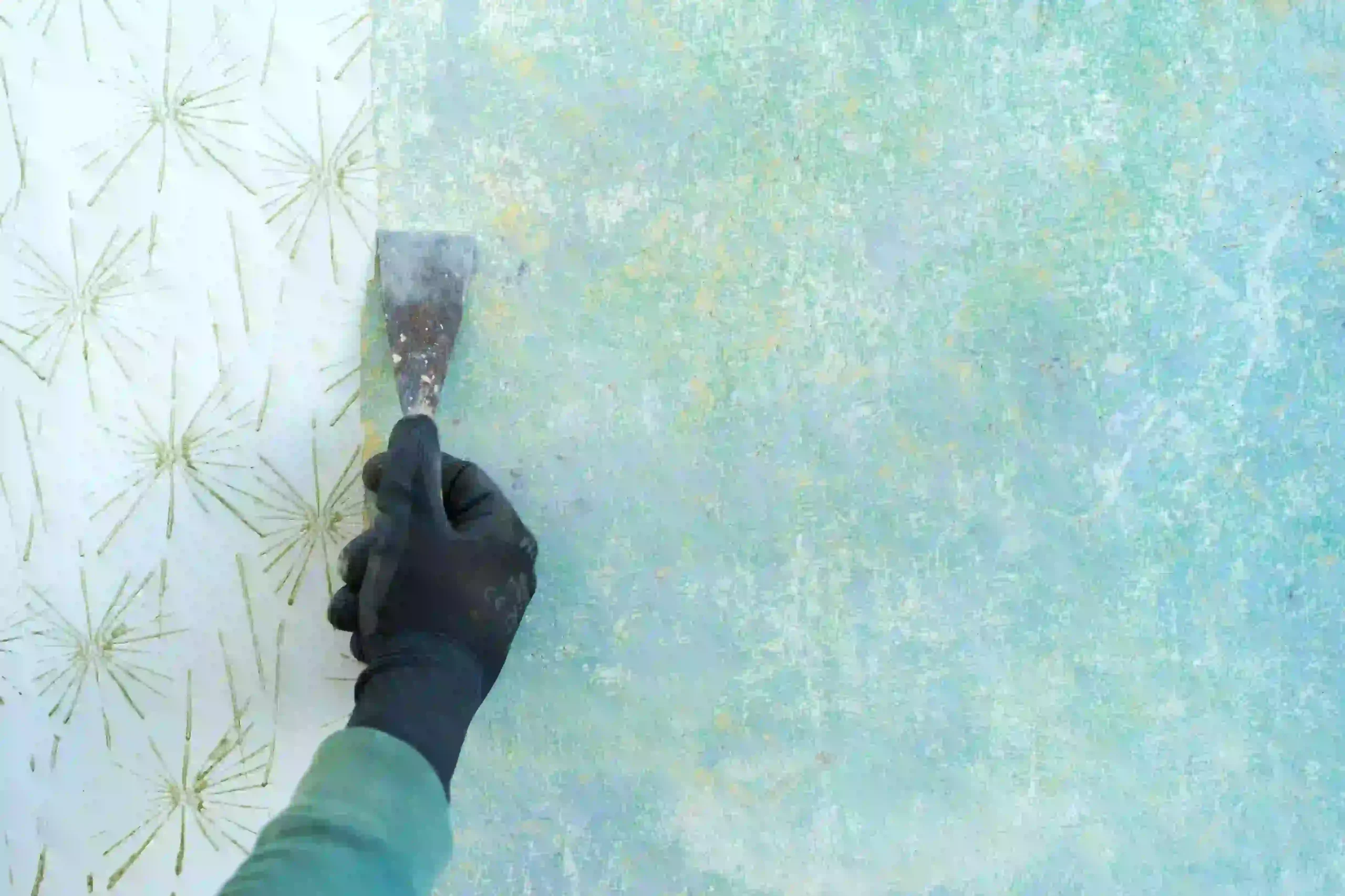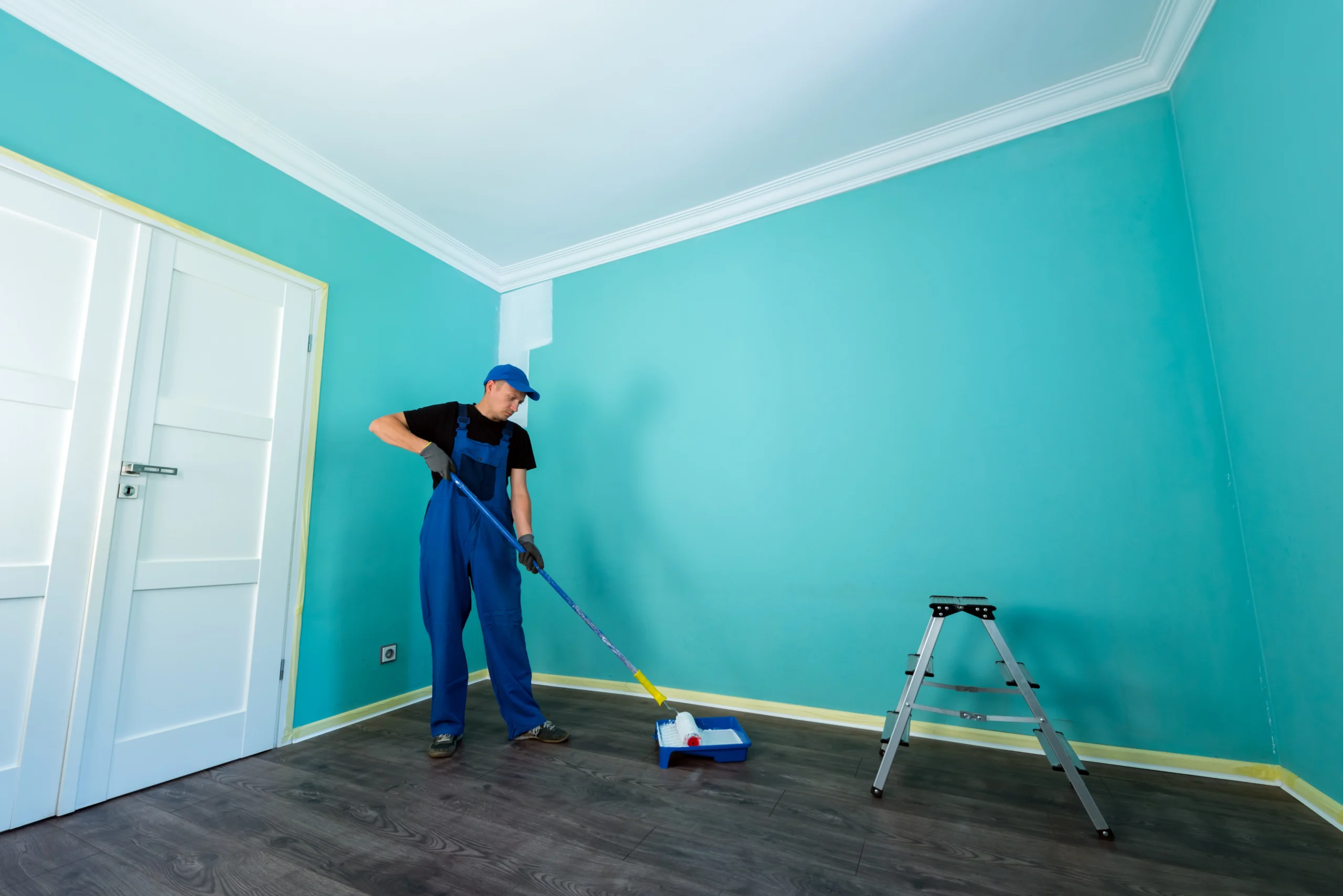Watching the transformation of your space by a wall painting project provides one of the most enjoyable aspects in home improvement. You may question the safety of sleeping in a Newly Painted Room. The answer to this question remains unclear because people need to understand all potential safety concerns linked to contact with fresh paint applications.
This blog will explore whether it is safe to sleep in a newly painted room. You must know the moment to return to your painted zones since paint drying in fresh areas will emit risky chemicals into the air. Basics and safety guidelines regarding the health threats from sleeping in freshly painted rooms are explained here.
Health Risks of Sleeping in a Newly Painted Room

The practice of sleeping in a newly painted room carries several health risks which affect the human body negatively. The negative health impacts occur when humans sleep in recently painted indoor spaces. Freshly painted rooms release dangerous chemicals that go into the atmosphere during drying. Your health can suffer from extended chemical exposure mainly due to volatile organic compounds (VOCs) among other toxic elements present in the atmosphere. The following section details specific threats for individuals who choose to sleep in recently painted areas.
Exposure to VOCs
- Different types of paints that include oil-based and conventional latex paints contain volatile organic compounds (VOCs) among their composition. People should be concerned about VOC emissions which become problems in newly painted spaces.
- The evaporation process of drying paint produces air droplets which release vapors that become inhalable fumes in the surrounding environment.
- Exposure to volatile organic compounds leads people to experience headaches together with nausea and lightheadedness during short-term exposure. Professional medical organizations identify that long-term paint exposure leads to respiratory conditions and possible cancer development.
Respiratory Issues and Irritation
- Fresh paint fumes entering your airways will lead to respiratory discomfort. The fumes from fresh paint can worsen asthma bronchitis symptoms and lung condition manifestations if you have respiratory sensitivity.
- The normal physical responses to fresh paint fumes include tightness in breathing combined with wheezing and coughing. The negative health impacts can occur to anyone regardless of their general health condition from extended exposure to toxic fumes.
Headaches and Dizziness
- Breathing paint fume chemicals can lead to regular occurrences of dizziness as well as headache symptoms. Although you do not suffer from existing respiratory disorders you could still suffer from these symptoms.
- Numerous vulnerable people experience respiratory complications when exposed to paint scents which become intensely unpleasant in conditions lacking proper air circulation. The area needs total ventilation before usage because these signs can persist for several hours following paint application.
Allergic Reactions and Sensitivity
- Fresh paint in rooms releases chemical substances which trigger allergies among specific individuals. Symptoms of skin rashes along with more severe reactions that include breathing troubles serve as examples.
- People who suffer from chemical allergies or sensitivities should delay sleeping in new paint areas until the air quality reaches normal levels.
Long-Term Health Concerns

- A person who sleeps in a painted room faces equal health problems over the long term as they do with short-term dangers. One single exposure to paint brings risk to human health regardless of repeated or continuous contact.
- Prolonged exposure to volatile organic compounds (VOCs) along with other paint chemicals raises the risk for liver damage and respiratory diseases and potential cancer development. Risks for Children and Pregnant Women
Risks for Children and Pregnant Women
- People who have sensitivities to paint fumes face higher risks compared to others due to conditions such as pregnancy or old age and children. The developing bodies of children make pregnant women more likely to suffer from respiratory problems caused by VOCs and other chemical pollutants.
- All pregnant women should restrict exposure to hazardous chemicals since these substances can potentially harm their developing fetus. It is advisable for expectant mothers and children to remain out of rooms after painting because fumes need time to dissipate.
Safe Waiting Time & It’s Affecting Factors
By general rule individuals should refrain from sleeping in newly painted room for minimum periods extending from 24 to 48 hours. Waiting periods for post-paint safety differ based on both paint materials used and ventilation results and temperature and moisture conditions. Several days of air exposure time should be allocated for rooms to dissipate pollution when the occupant shows paint sensitivity or chemical allergies to paint fumes.
These factors can help you determine when it’s safe to return to your freshly painted room:
- Type of Paint: The duration for paint dryness gets affected by what type of paint coating is used. Paints based in oil generate stronger fumes during drying while needing a longer duration to dry than latex paints, especially when used in a newly painted room.
- Ventilation: The drying time shortens when we ventilate the workspace because fumes exit while fresh air flows throughout the area. The use of fans with window ventilation will speed up drying time.
- Temperature and Humidity: The dry process for paint shows faster results during hot dry days but colder humid days might slow the drying down and allow the fumes to linger in the air longer.
- Number of Coats: Multiple layers of paint application will increase the drying duration and slow down volatile organic compound emissions.
- Paint Safely with InterColor Painting LLC: We place home safety with visual aesthetics at the forefront of our painting task. InterColor Painting LLC uses premium paints containing low volatile organic compounds to maintain fresh air quality in newly painted spaces.
By keeping these factors in mind an informed decision about when it’s safe to sleep in a freshly painted room requires consideration of these factors
Conclusion
Making a swift entry into your newly painted area seems attractive, yet your health security must always be a top priority. Fumes released from fresh paint have both short-term headache-causing effects and lead to long-lasting breathing problems. A person should wait between 24 to 48 hours or longer before sleeping in a newly painted room, since this time period helps reduce risks.
The room becomes safer through proper ventilation and through the use of environmentally friendly paint products with low Vital Organic Compounds content. If you’re looking for professional painters your search ends here without any delay contact InterColor Painting LLC. Here we understand the importance of both quality and safety.






